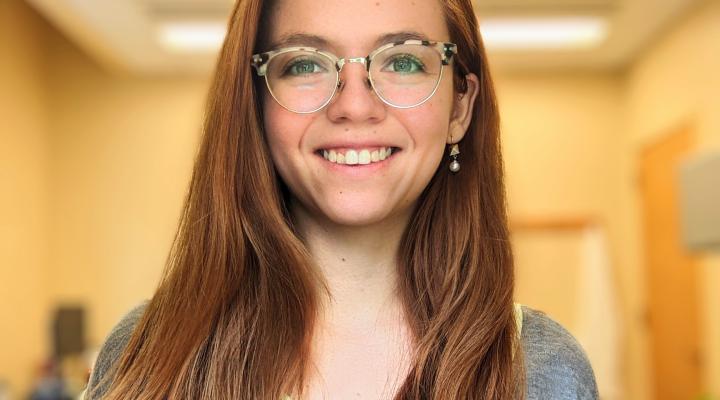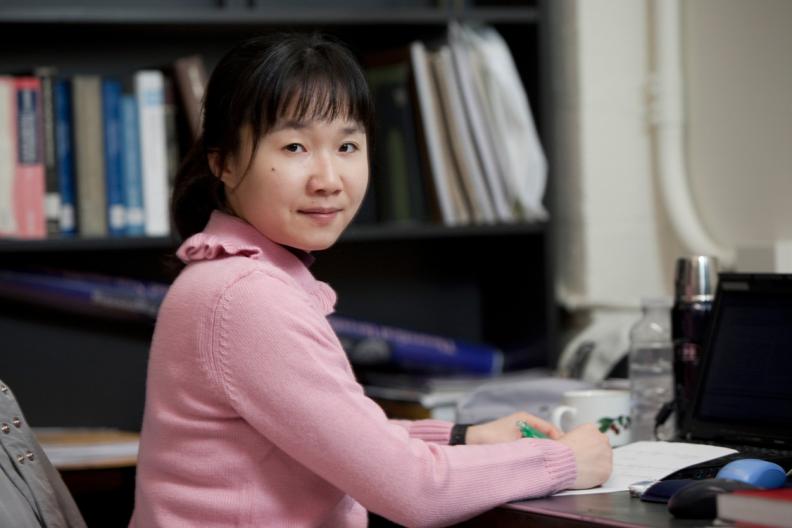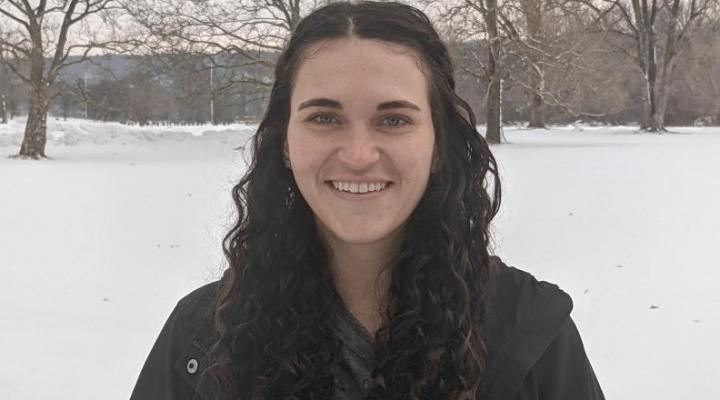When Hsiu-Yu Yu left Taiwan four years ago to begin her Ph.D. studies in chemical engineering at Cornell, she thought she knew what NIMs were.
“I thought this is basically a colloidal system since we have particles, and the corona would not be anything different from those systems that have already been discovered,” she says.
But Yu soon realized, with help from adviser Don Koch, that NIMs were different and studying them would require new techniques. “Since the system doesn’t have additional solvent and the corona itself provides the fluidity, then the way of investigating the interparticle forces would have to be different,” she says.
While that made her work more difficult, it also presented opportunities. “At first I did spend a lot of time trying to figure out what kind of approach I’m going to explore in doing this research. At some point I felt frustrated,” says Yu. “But Professor Koch encouraged me to think about this in the way that well, you might think it’s strange it doesn’t have solvent, but on the other hand you can learn more about applying different methods in investigating this system.”
NIMs were so new, scientists like Yu were just trying to understand them. She focused on their equilibrium and transport properties. “My work is to understand this material in a theoretical way,” she says. “It turns out that this system shows very interesting behaviors that basically no one has explored before.”
As the work of Yu and others expanded the theoretical understanding of NIMs, potential applications began to emerge. “In the beginning I didn’t think too much about what kind of applications I can play with,” says Yu. “As I went along with the whole project, I gradually learned that there are all sorts of applications this system can have.”
One of those applications is capturing carbon dioxide. “In the solventless system, the tethered oligomers or hairs will be constrained to fill the space. So they don’t have that many degrees of freedom to be where they want to be,” says Yu, “but if the CO2 molecule has some kind of interaction with the hairs, it’s possible that while the CO2 is captured into the system it can release some of the entropic frustrations of the hairs.”
That might allow a NIM to soak up CO2 like a sponge, or not. “We need to be careful since this expansion might lead to other limitations to capture CO2,” explains Yu. “At the beginning, we presume that the concentration of the corona in a fluid state should be a constant, but once you add something more into the system, you can imagine that the system volume could expand a little bit and that might add some other constraint.”
Yu works closely with others at Cornell and elsewhere to piece together this puzzle. “Generally, I’m looking at the physical aspect, and for the chemical interaction, I rely on the experimentalists,” she says. “They test how the gas is captured into this kind of materials, and I use the data they have to extract the information I need to build the calculation.”
Yu solves her equations analytically as far as she can, using a theoretical model that likens the force exerted within NIMs to a spring, for example. “And in the end, if there’s something I cannot simplify more, then I solve it numerically,” she says. “The beauty of this is that we don’t throw a lot of information into the computer and make it run, instead we analyze which term would be important and which can be ignored and get some aspects of the physics.”
With her collaborators, Yu has published one paper and they have several more in the works. She hopes to finish her degree after next summer. “I’m trying to see what kind of companies I can work with,” she says. “Also I’m trying to look at what other scientists at other institutions I can work with for one or two years in a postdoc.”
While exploring all her options, Yu said she’s leaning more toward a career in academia. “Part of the reason would be that as a theoretician it would be more interesting to us to think about some problems that no one has thought about,” Yu says. “If we just work in industry, we have sets of problems that we have to deal with within a period of time, but theoreticians are very easily distracted,” she adds, with a smile.
Wherever she ends up, Yu thinks NIMs have a bright future. “This system will go really far. It has very high potential,” she says. “And in that sense, for me, I would be very interested in understanding all kinds of new properties that the system can have.”






